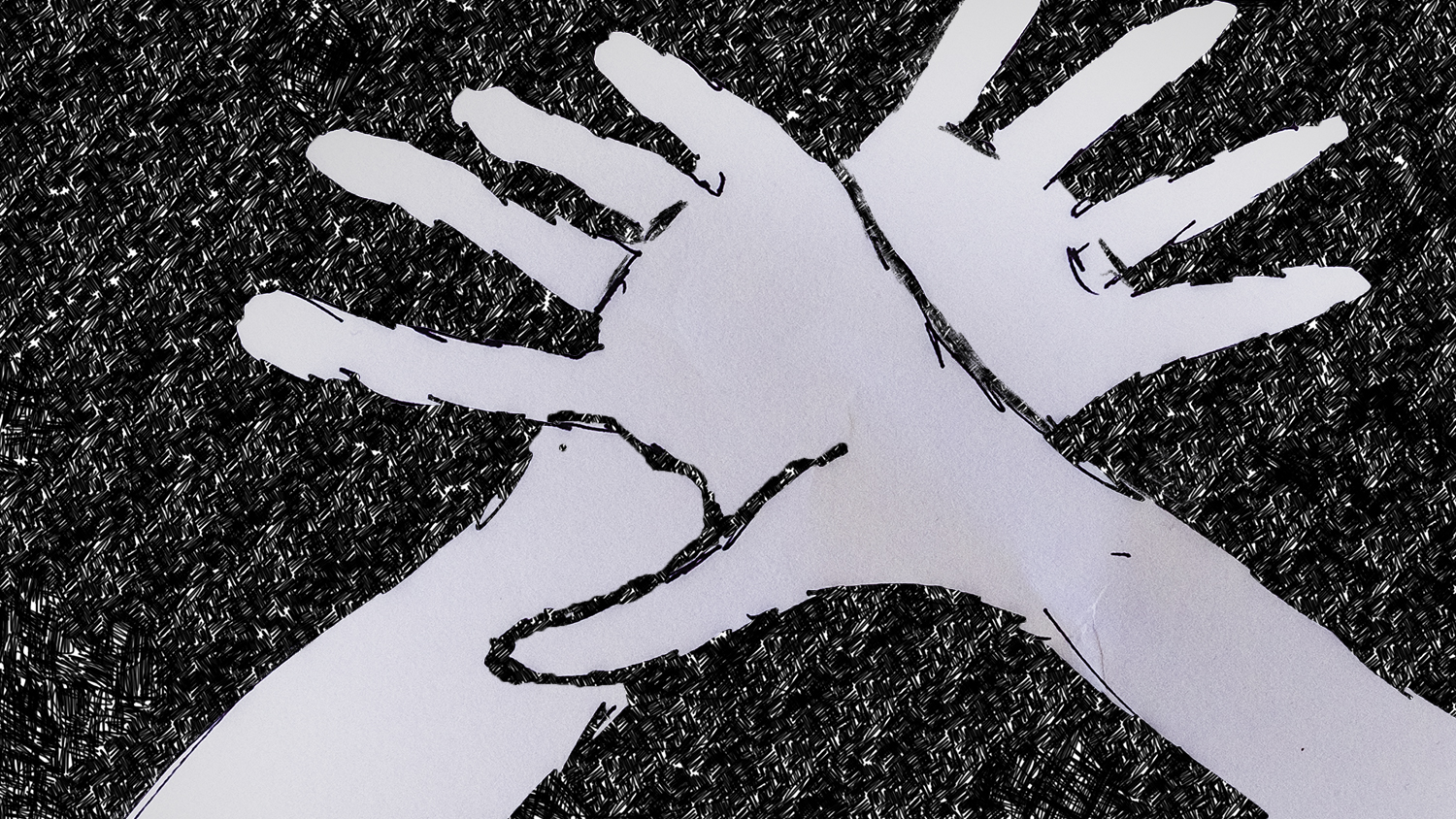
(Graphic by Brody Ford / News21)
Almost 20 years after the unanimous passage of the Prison Rape Elimination Act, experts debate whether the first-of-its-kind law is capable of ending sexual abuse in prisons, including juvenile detention facilities. But they agree it has been a step in the right direction.
Young people in detention are vulnerable to sexual abuse for a number of reasons, including gender identity, sexual orientation, the culture within a facility and whether the detainee had been sexually abused before their arrest.
In a 2018 survey conducted by the federal Bureau of Justice Statistics, youth reports of sexual activity in detention declined to 7.1% in 2018 from 9.5% in 2012. However, experts don’t believe the numbers provide the full picture.
“Sexual abuse of any kind, even with the best reporting system, is always underreported,” said Brenda Smith, a former member of the National Prison Rape Elimination Commission, created to address the problem of sexual abuse in correctional facilities.
If children experience sexual assault while in custody, the law, known as PREA, empowers them to report it verbally, in writing or anonymously to the detention facility or to an outside entity. Many facilities also have anonymous hotlines.
Eileen Ahlin, an associate professor of criminal justice at Penn State Harrisburg and a leading researcher of sexual assault in youth detention centers, doubts that sexual abuse in custody can ever be eliminated.
“They’re in confined conditions that are ripe for violence,” she said. “While we can reduce it and we can provide opportunities for people to have more support … I just don’t think it’s ever going to go away.”
Ahlin recognizes there are flaws in how PREA collects data, but she relies on it because there are no other sources.
“It’s all we have,” she said.
For a kid locked up, PREA is discussed but not always taken seriously, said Davossi Wisdom, 21, of Des Moines, Iowa, who was in and out of juvenile detention centers and jails since he was 9.
“They’re not going to let you go home for telling (on an abuser). You’re going to have to stay there,” he said. “And every time (PREA was mentioned), we’d just run around the pod yelling ‘PREA!’ It was a joke to us.”
Smith said the law is an important step in reducing, if not eliminating, sexual abuse of kids in custody, but much remains to be done.
“There needs to be education. The kids need to have training. They need to have access to confidential ways of reporting,” she said, adding that state juvenile justice agencies need to “step up” and be held accountable for protecting children in their charge.
“I don’t see that happening a lot at the state level until there is a scandal,” Smith said.
Deborah Fowler, executive director of Texas Appleseed, a nonprofit for juvenile justice reform, has seen this play out in Texas over the past decade, as multiple sex abuse scandals in detention centers have led to reforms.
She and other advocates’ approach to protecting kids has been to push for shutting down large detention facilities because of their inherently violent conditions.
“It’s just not a system that makes sense in 2020,” Fowler said. “We know a lot more today than we did (when detention centers were created) about what kids need and what works, and how to structure a system so that kids’ needs are being met and they are not being victimized.”
Before PREA was passed in 2003, Rep. Bobby Scott, D-Virginia, the last of the act’s co-sponsors still in Congress, said sexual victimization while in custody was accepted as part of the sentence.
“Prison rape was a subject of late night comedian jokes,” Scott said. “It just wasn’t taken seriously.”
For many, the mention of sexual abuse in correctional facilities summons the fear of violent encounters taking place under the cover of night. However, Ahlin said, the abuse isn’t always this clear cut — the victim may believe they are giving consent, despite their age.
Ahlin and other experts say a juvenile in custody cannot legally consent to sexual activity with a staff member due to the power imbalance, both age and authority.
“As a youth, there’s still that developmental process that’s going on,” Ahlin said.
Wisdom said a female staff member approached him for sex when he was at Woodward Academy in Iowa.
“‘I don’t want to, but it’s going to make my time better here’ — that’s the type of consent I was giving,” he said.



Davossi Wisdom was 2 when he was adopted by a family in Des Moines, Iowa, but he says he often felt out of place as a child. Now 21, Wisdom says life in the juvenile justice system felt easier than staying away from negative influences on the outside. He recalls encounters with law enforcement starting at age 9. (Photos courtesy of Davossi Wisdom)
At the places where he served his time, Wisdom said kids were given incentives, such as extra food, in exchange for sexual encounters with staff, and none of the residents saw being underage as an issue or understood their inability to consent.
Although Wisdom never reported these incidents, he filed a PREA report once, when a male staff member touched his genitals, resulting in a fight that left Wisdom restrained by several staff members.
After he filed the assault report about being inappropriately touched, the state and the county sheriff’s office opened an investigation and the staff member was terminated less than two months later, Wisdom said.
Woodward Academy officials declined to comment directly on the allegations, citing federal and state privacy laws and regulations on releasing medical information. Allegations are internally investigated, they said, and appropriate action is taken on those proven true.
Ahlin said any type of sexual activity between a juvenile and a staff member is coercive and a violation of PREA.
“It’s never OK for someone under age to have a relationship with someone over age, let alone having that power differential,” she said.
Although girls in detention are more likely to be abused by their peers, Smith said, boys are more likely to be abused by staff.
In the Bureau of Justice Statistics’ 2018 survey, 7.1% of boys and 6.6% of girls reported sexual abuse in the past 12 months or since their arrival at the detention center. In addition, 6.1% of boys reported sexual activity with a staff member compared with 2.9% of girls; 4.7% of girls reported sexual activity with another youth compared with 1.6% of boys.
Smith, who was influential in shaping PREA regulations, said the idea that a person in custody can’t legally consent to sex with a staff member is one of the “real forward leaps” the law has made.
Fowler, with Texas Appleseed, said her state has been at the forefront of legislative reform, prompted by a 2007 investigation by the Texas Rangers that revealed the sexual abuse of several boys at the West Texas State School, which was run by the Texas Youth Commission.
As the scandal made clear, there was a broader systemic issue, Fowler said, and legislators called for an entire restructuring of the state youth detention agency. The Youth Commission was combined with the Juvenile Probation Commission to become the Texas Juvenile Justice Department.
Texas Appleseed and other organizations pushed to shut the state’s secure facilities in the wake of the scandal, and today only five of more than a dozen remain.
“I would like to see every single one of those youth prisons closed because I don’t believe they’re ever going to be effective or safe places for young people,” Fowler said.
PREA standards still were being finalized in 2007, and they didn’t take effect until 2012, almost nine years after the act passed Congress.
From 2016 to 2017, four employees were accused of sexual misconduct at the Gainesville State School, one of the five remaining secure youth facilities in Texas, according to news reports.
An audit of Gainesville State School in 2015 had shown the facility met all PREA standards and exceeded in one: hiring and promotion decisions.
“The problem with the system is not that PREA is flawed, the problem with the system is that the system is flawed,” Fowler said of the facility exceeding the PREA hiring standard and subsequently having this type of scandal.
Although advocates acknowledge PREA has accomplished good things, Fowler, Smith and others seek a deeper change.
“PREA didn’t do enough to address the basic condition that causes people to be vulnerable to sexual abuse, which is imprisonment (itself),” Smith said. “The biggest thing that you can do to keep people from being victimized in custody is for them not to be in custody.”
Within 72 hours of a child’s arrival, PREA requires juvenile detention centers to evaluate whether the child is at risk of being sexually abused or sexually abusive to others. Part of this assessment is looking for a history of sexual assault that, Ahlin said, can make a child more vulnerable to abuse during incarceration.
In a 2018 study by Ahlin, children with previous sexual abuse were 52% more likely to experience sexual abuse in detention. Those who had previously abused in another detention center were 697% more likely to experience sexual abuse in subsequent facilities.
Other factors that make a child more vulnerable to sexual abuse in detention, the study said, include identifying as LGBTQ+ and being involved in a gang.
It’s common for youth in detention to report previous sexual assaults, experts say, particularly among young girls whose crimes are a direct result of adverse childhood experiences.
In fact, nearly a third of girls in the juvenile justice system report experiencing sexual abuse in the past, compared to 7% of boys, according to a 2015 study by Right4Girls, the Georgetown Law Center on Poverty and Inequality and the Ms. Foundation for Women.
Trauma from sexual abuse can forge a path to the juvenile justice system, known as the “sexual abuse-to-prison pipeline.” Often, said Mary Marx, president and CEO of Florida’s Pace Center for Girls, experiencing sexual abuse leads to delinquent behavior in youth, increasing the likelihood of arrest.
“Sexual abuse and particularly unresolved sexual abuse, it impacts girls’ thinking, their behavior, their health or mental health, their overall well-being,” Marx said.
To prevent sexual abuse in detention, Marx said, the juvenile justice system as a whole needs to be more sensitive to trauma that children have faced before they enter. PACE, whose mission focuses on girls, has advocated for all-female courts, probation teams and all-female staff at juvenile facilities.
“You have girls who have been sexually abused and, for the most part, you’ve got a lot of male employees in the detention centers or in the residential facilities,” Marx said. “You’re just amplifying the trauma.”
One example of abuse prevention comes from a model program co-authored by Tammy Rothschild, a specialist in gender-responsive programming who worked with the Center for Gender and Justice in California. The program is meant to shift a facility’s culture from focusing on punishment to recognizing trauma-related behavior and responding appropriately.
“Juvenile detention is not a fun place to be, but it doesn’t have to be a miserable place to be,” Rothschild said. “Kids and staff don’t have to have contentious relationships all the time.”
Through Rothschild’s program, residents meet daily with an employee for a progress review and are asked questions about how they treated others that day, awarding themselves marks for thinking, learning or contributing.
After she worked a year with an Alaska detention center, Rothschild said, the number of restraints and injuries declined.
Fowler, who as part of her work with Texas Appleseed has spent time in detention centers talking to kids about their experiences, said she feels “total heartbreak” when they go through sexual abuse and other tragedies while incarcerated.
“You can’t believe what some of the kids have already survived, and to imagine putting them in an environment that is supposed to help them and instead revictimizes them — it enrages me,” Fowler said. “It’s deeply upsetting and is going to do precisely the opposite of what the system is supposed to do.”
Jana Allen and Haillie Parker are Ethics and Excellence in Journalism Foundation fellows.
Our content is Creative Commons licensed. If you want to republish this story, download a zip file of the text and images.